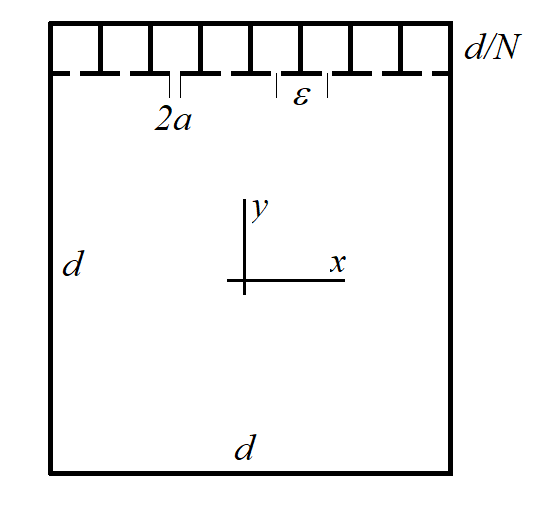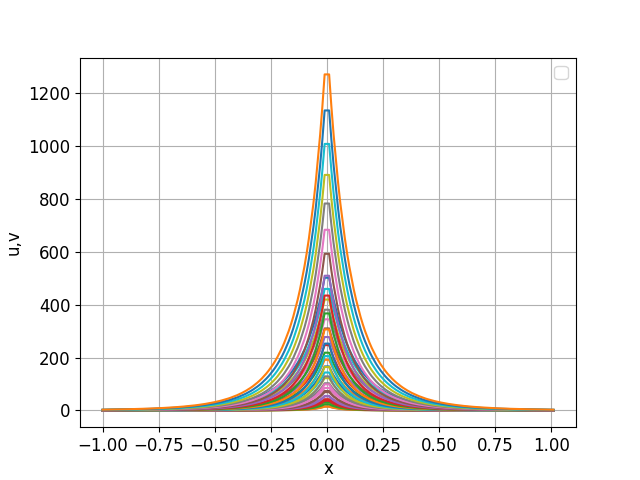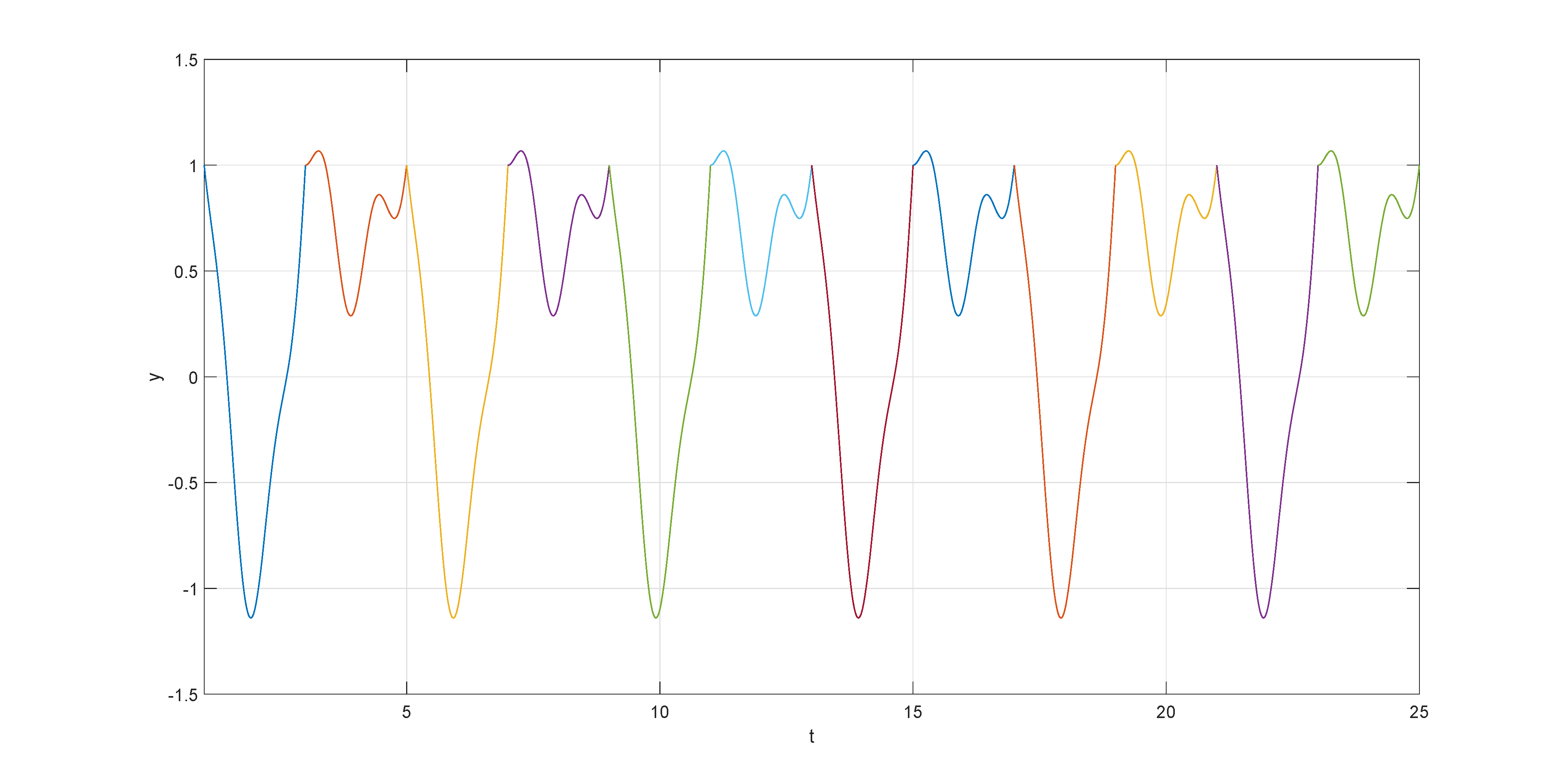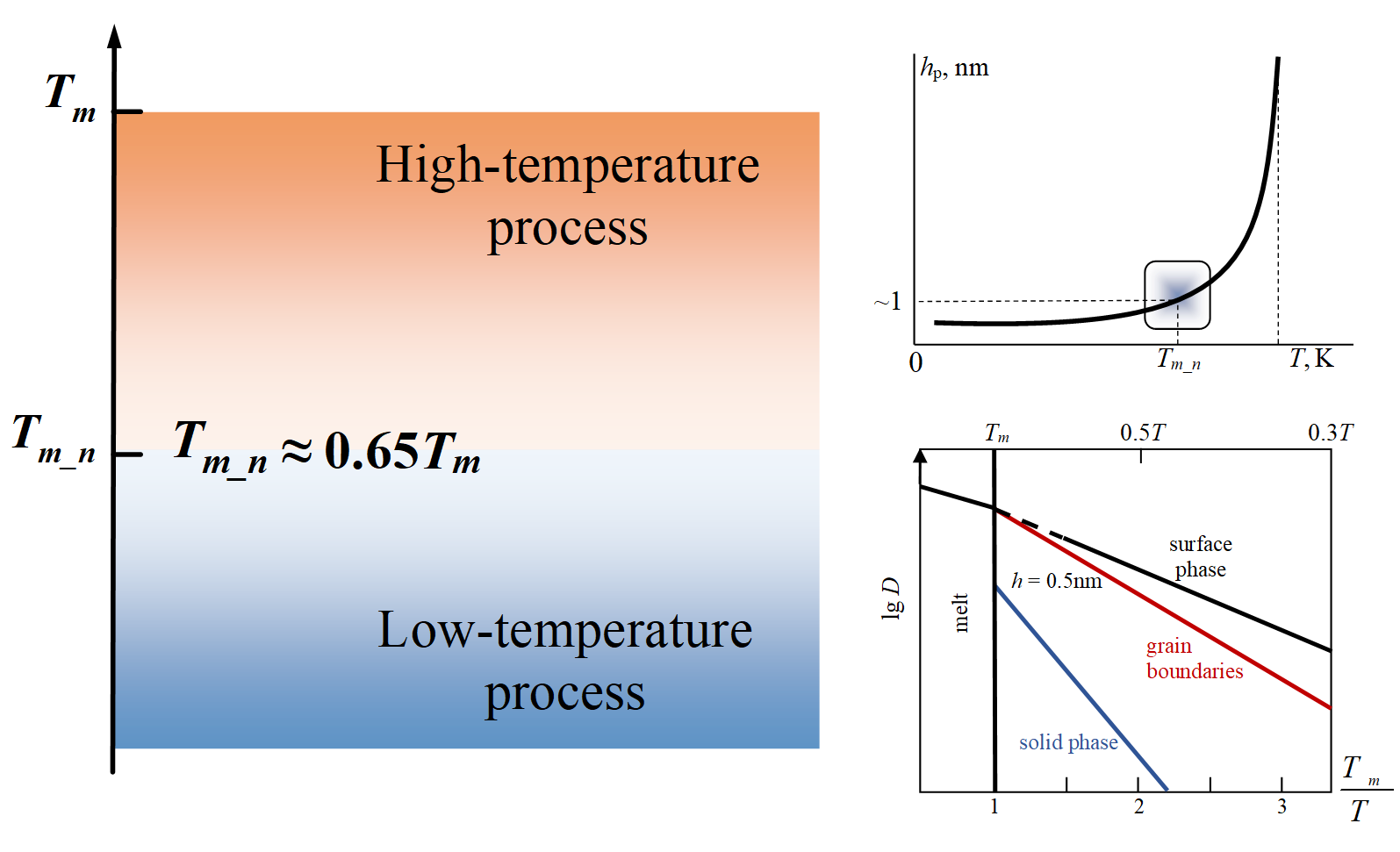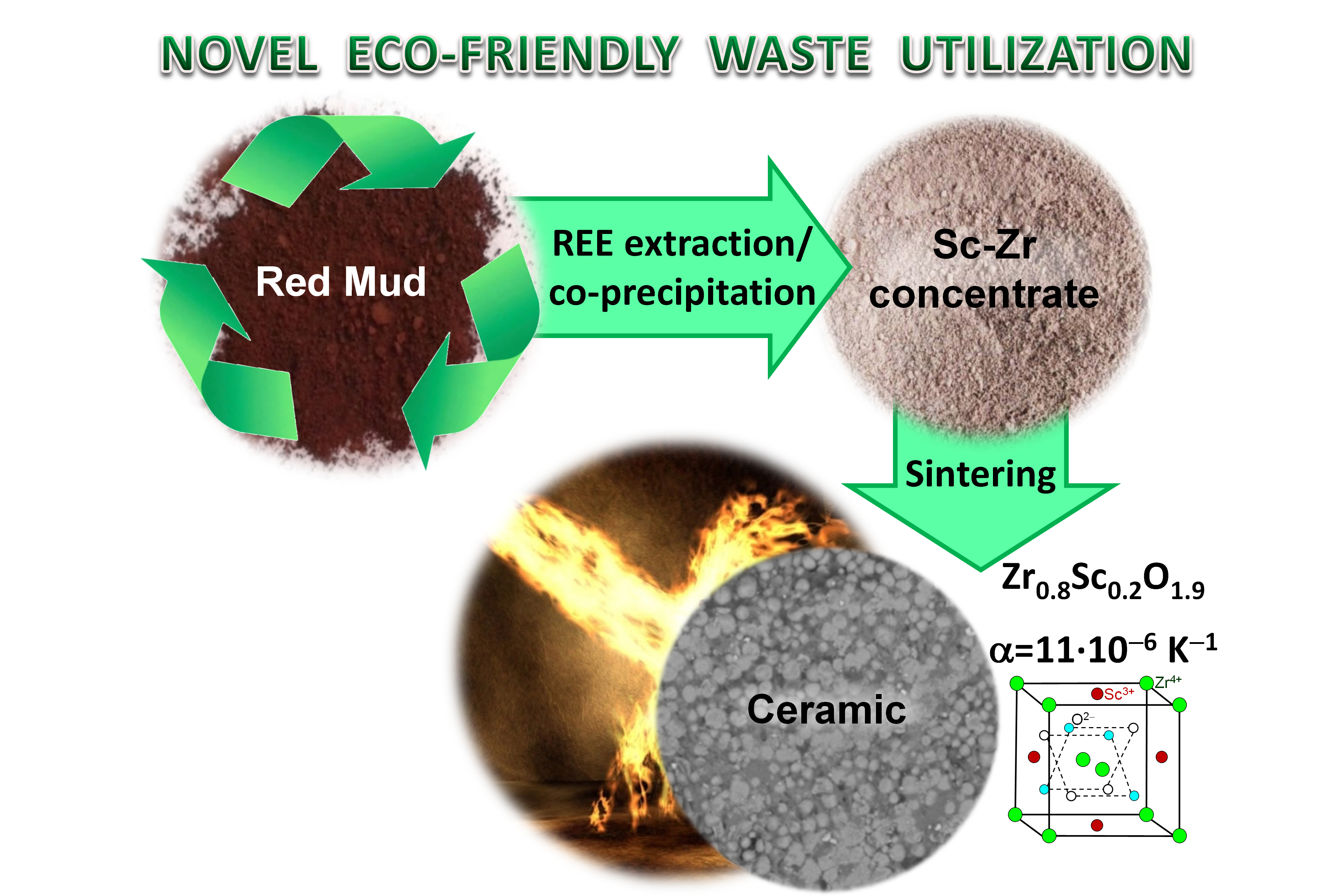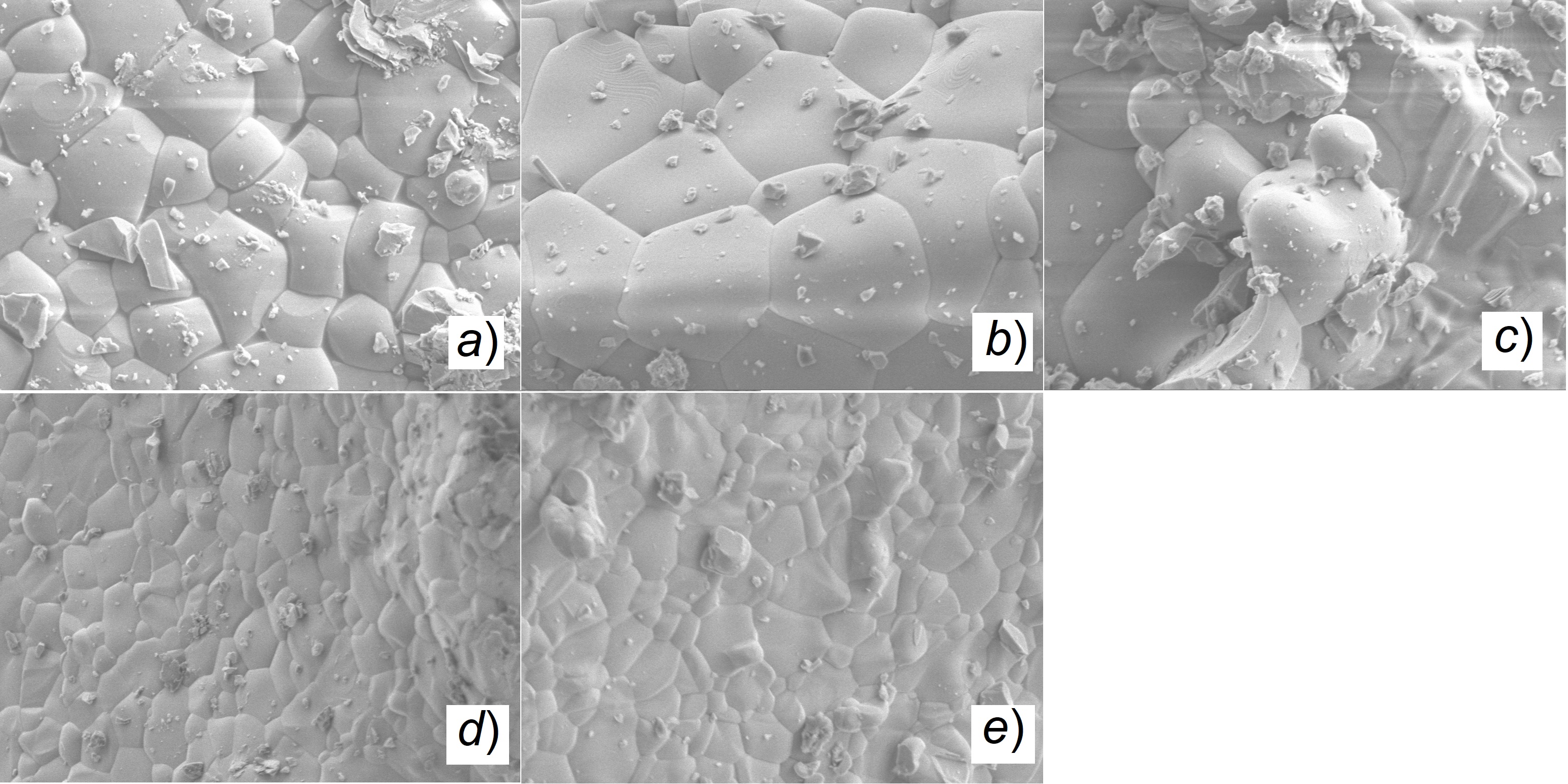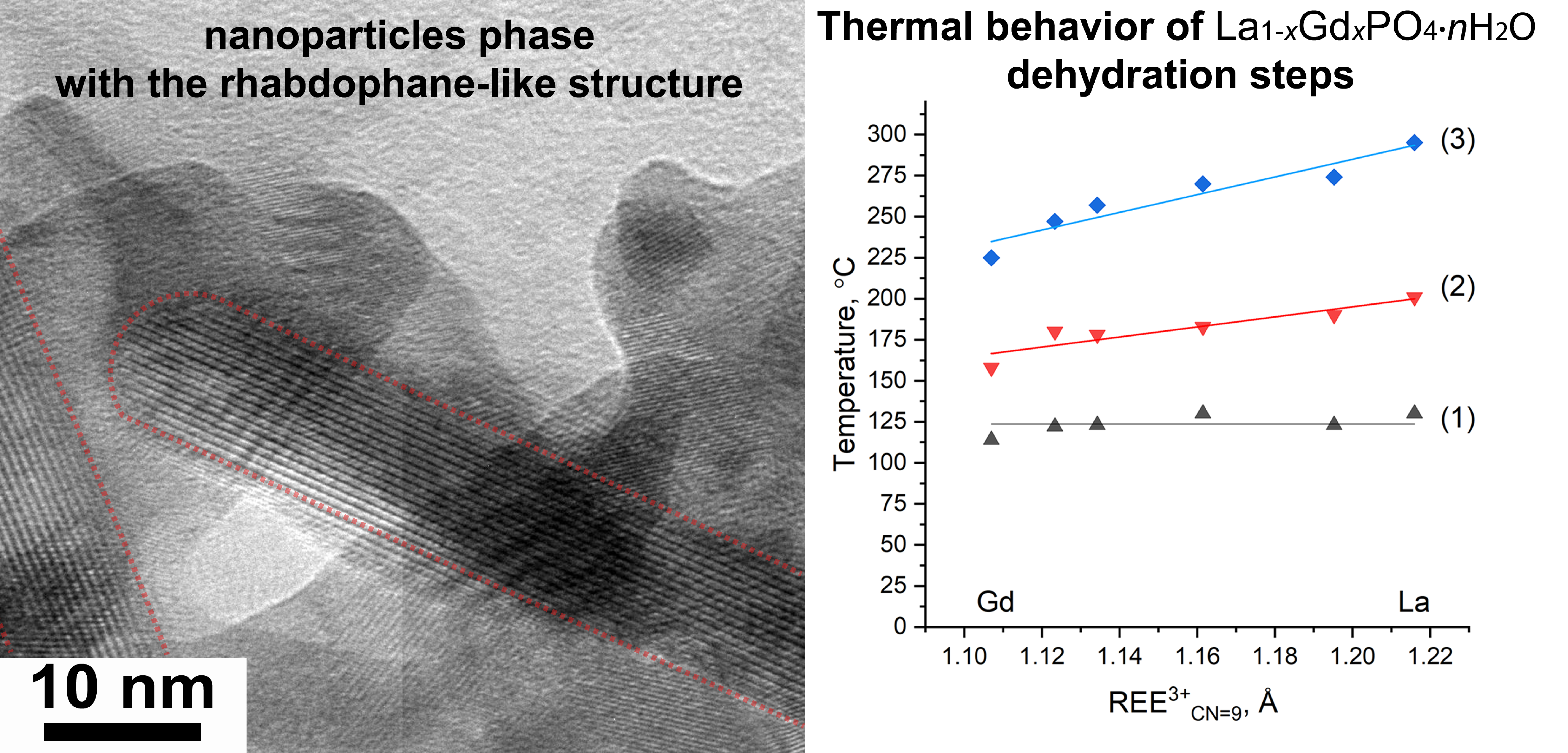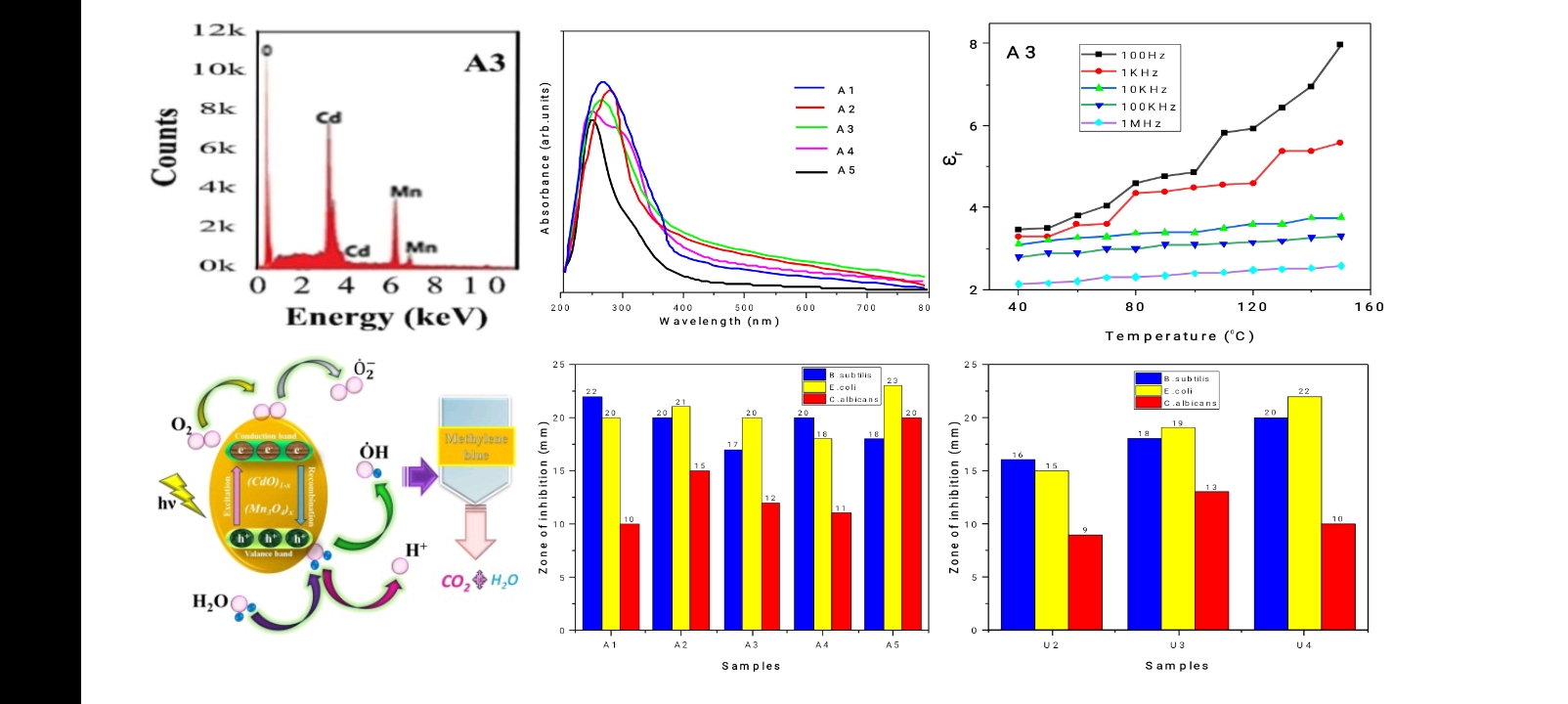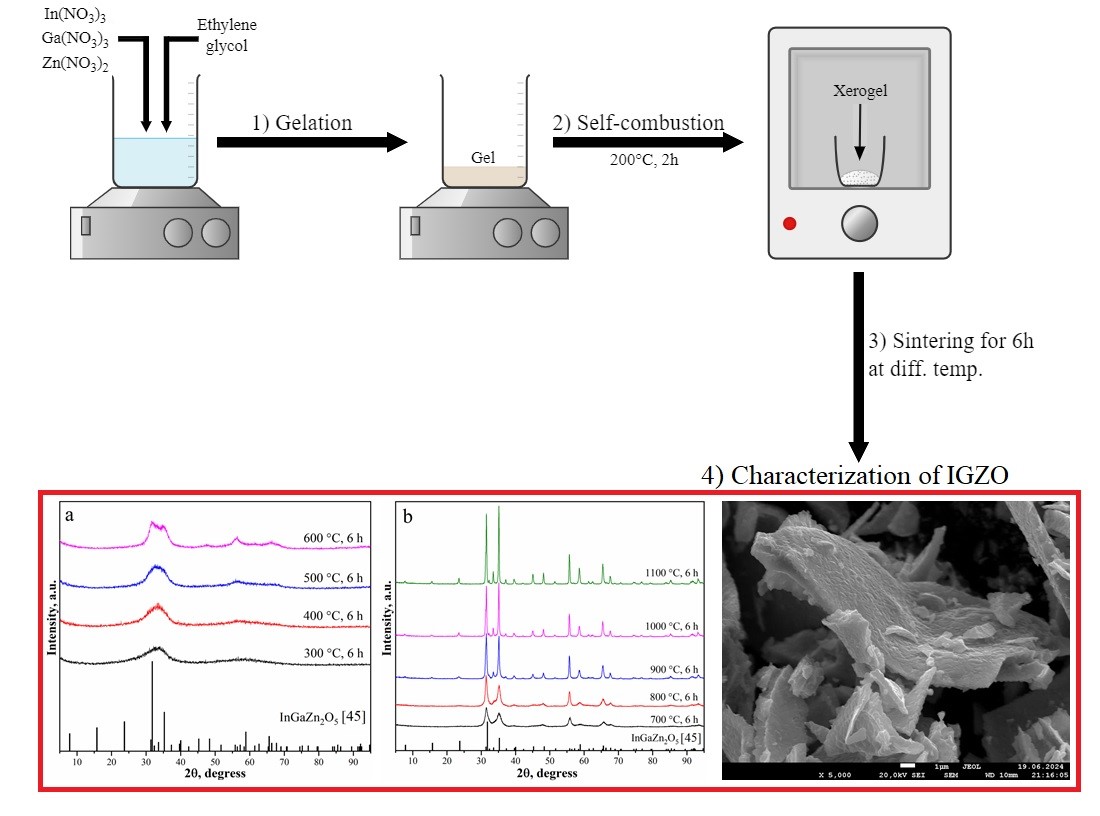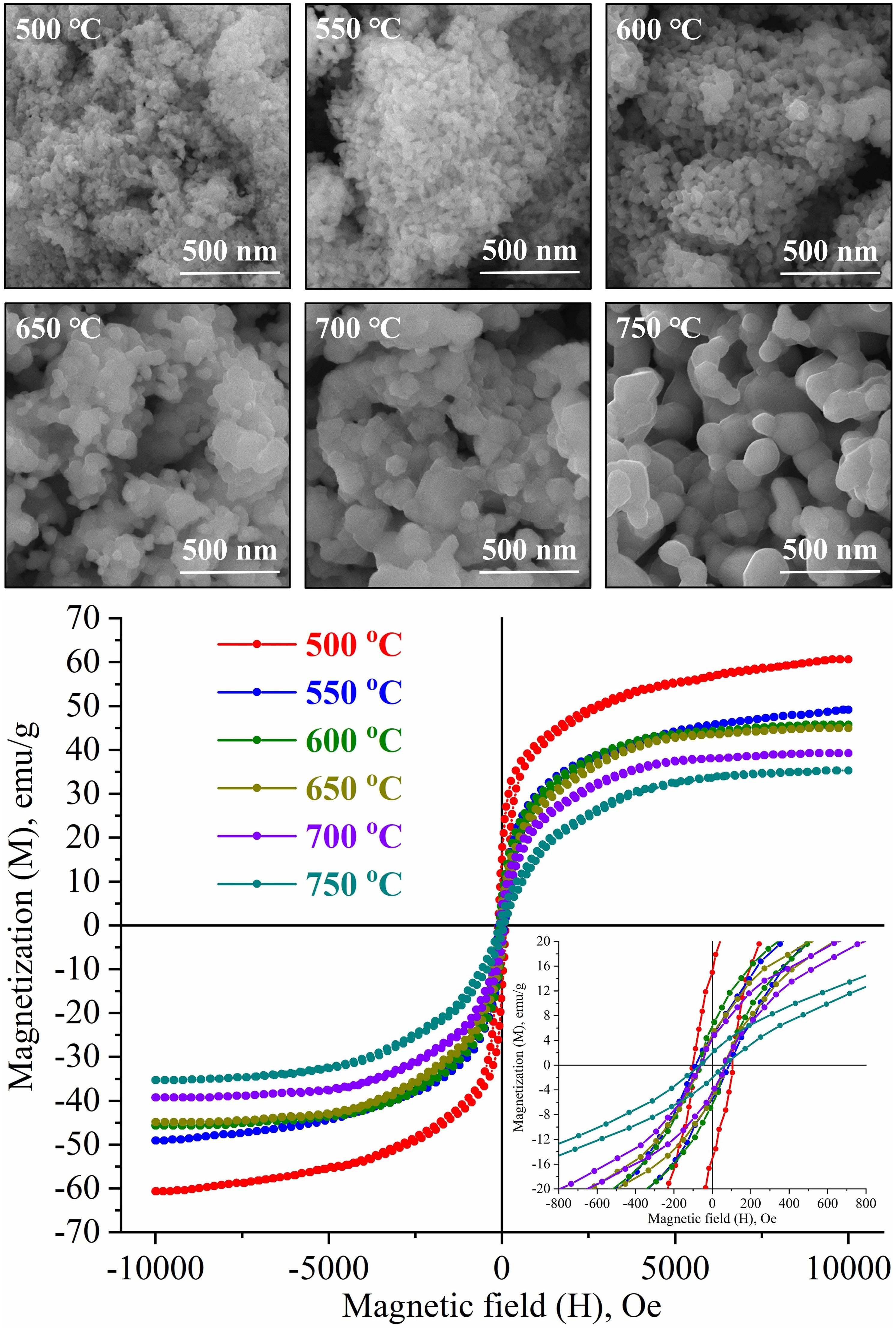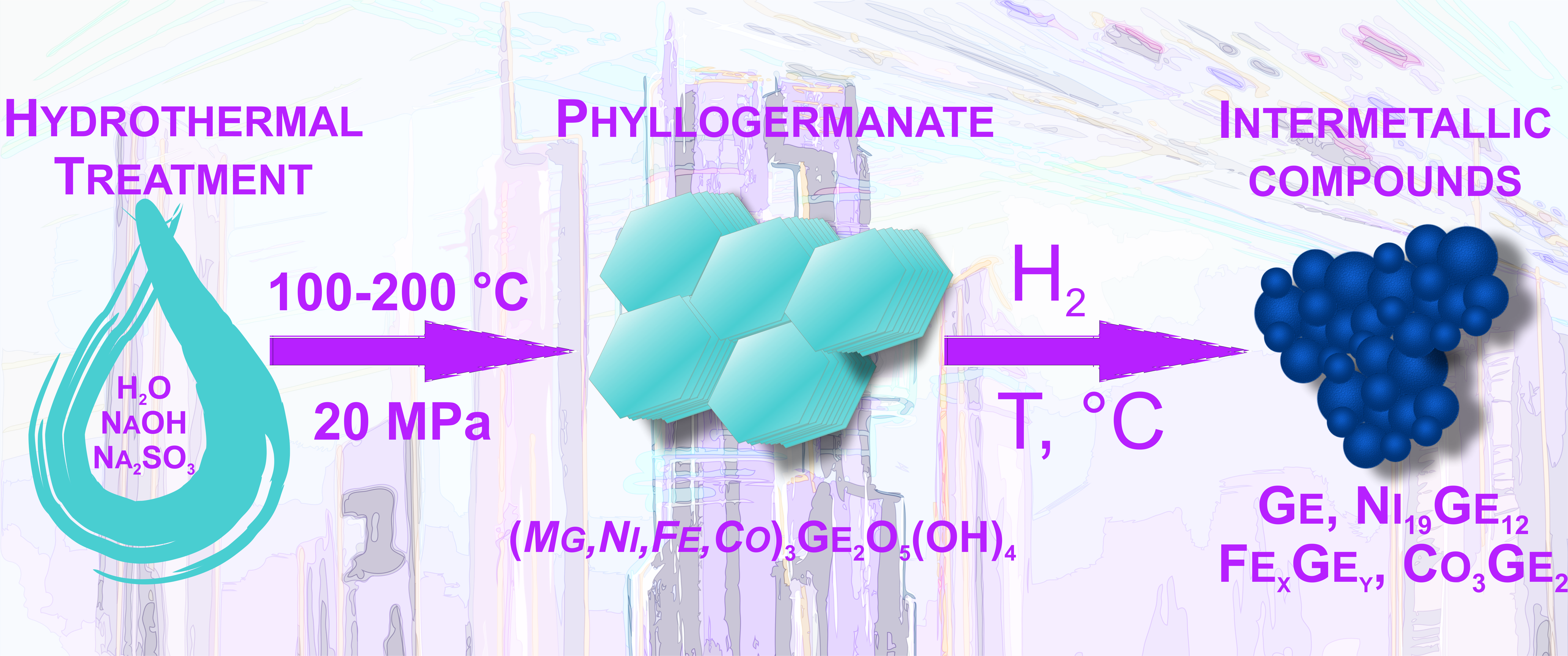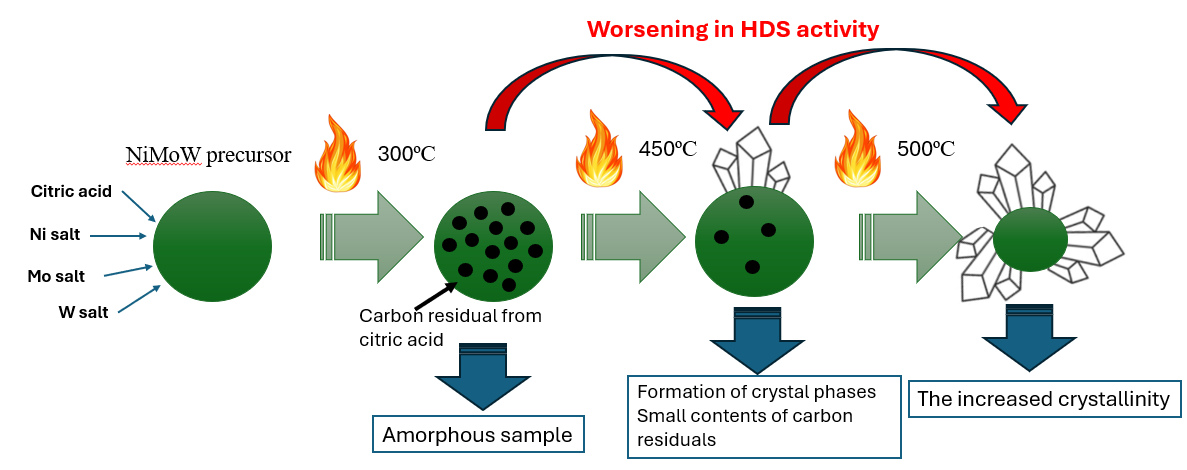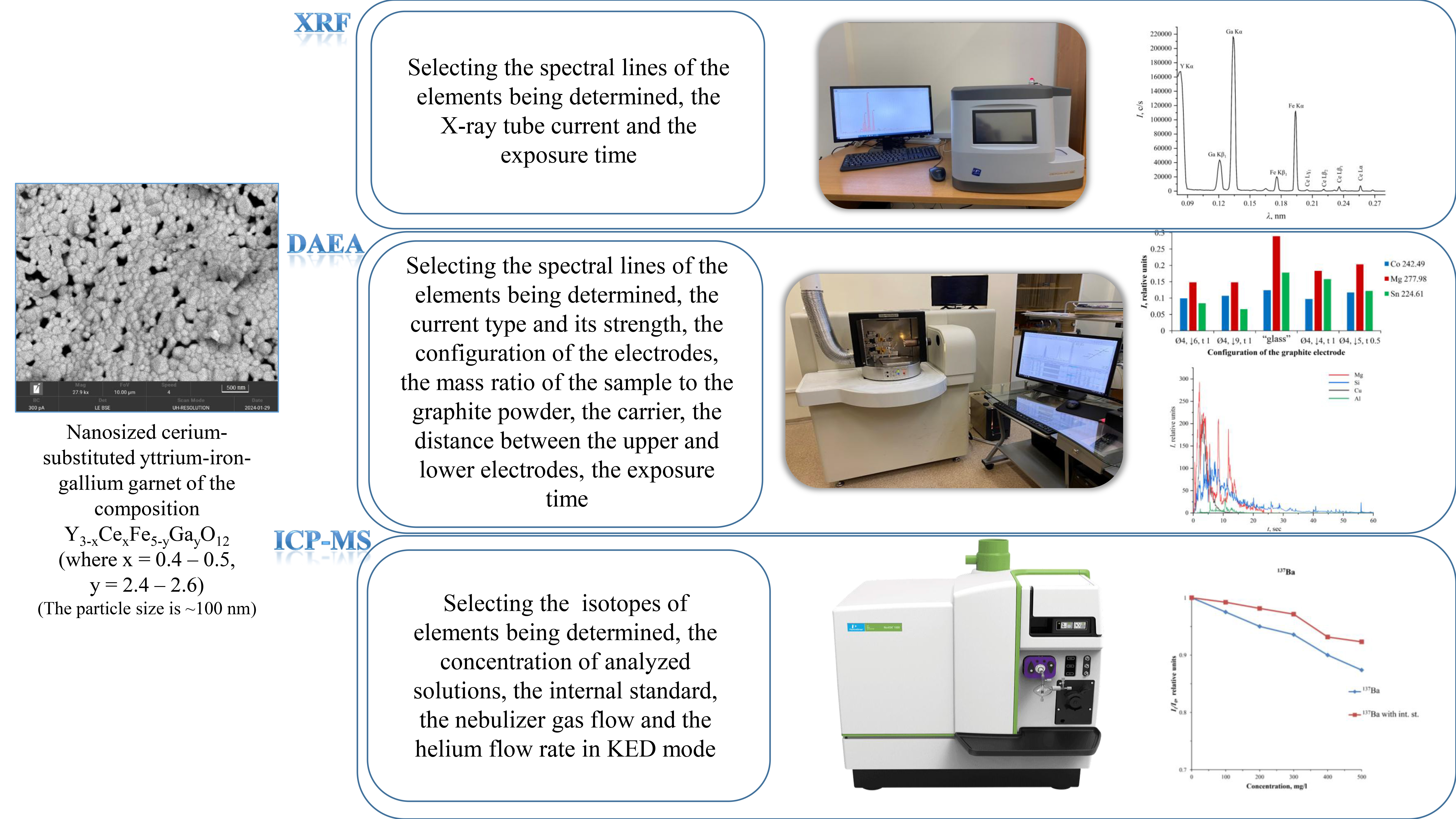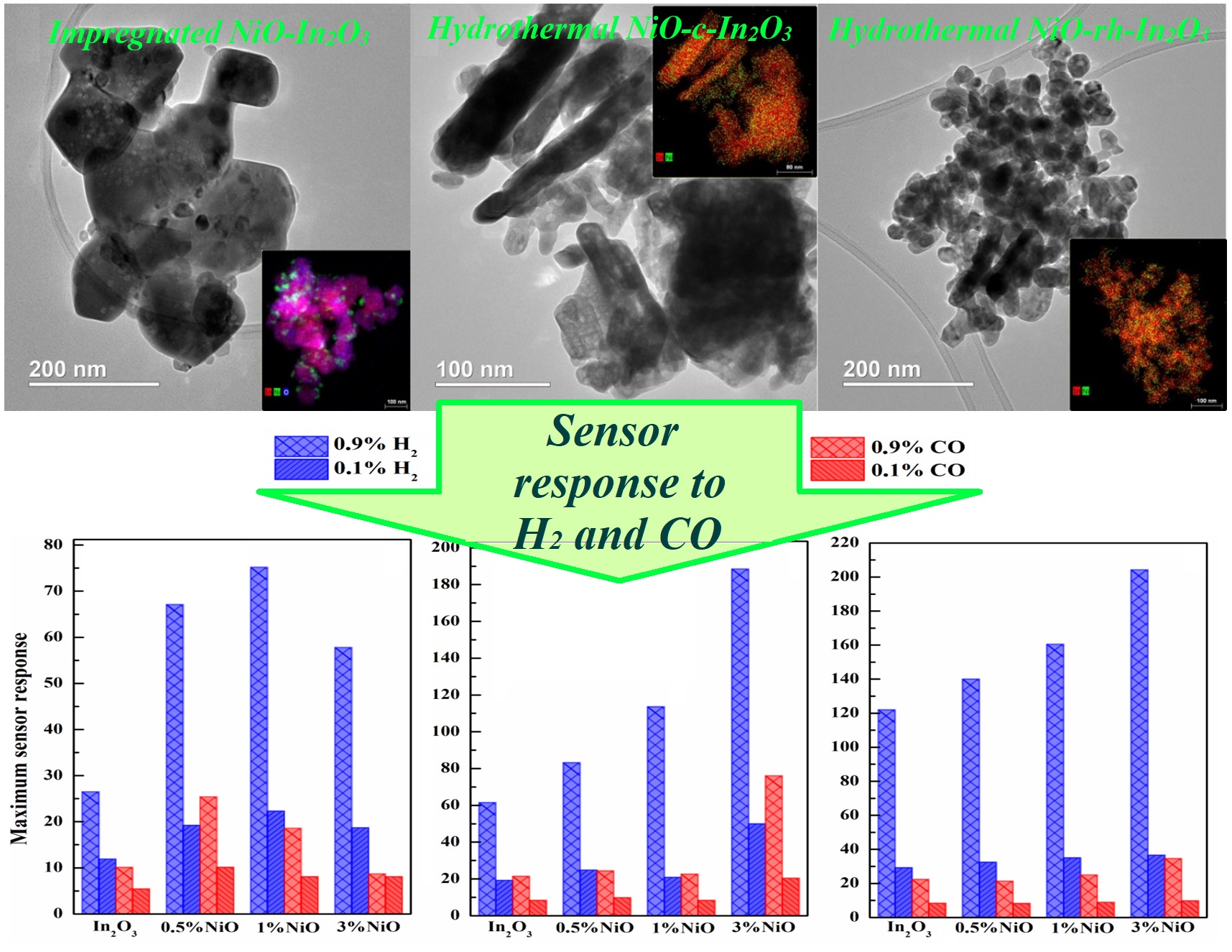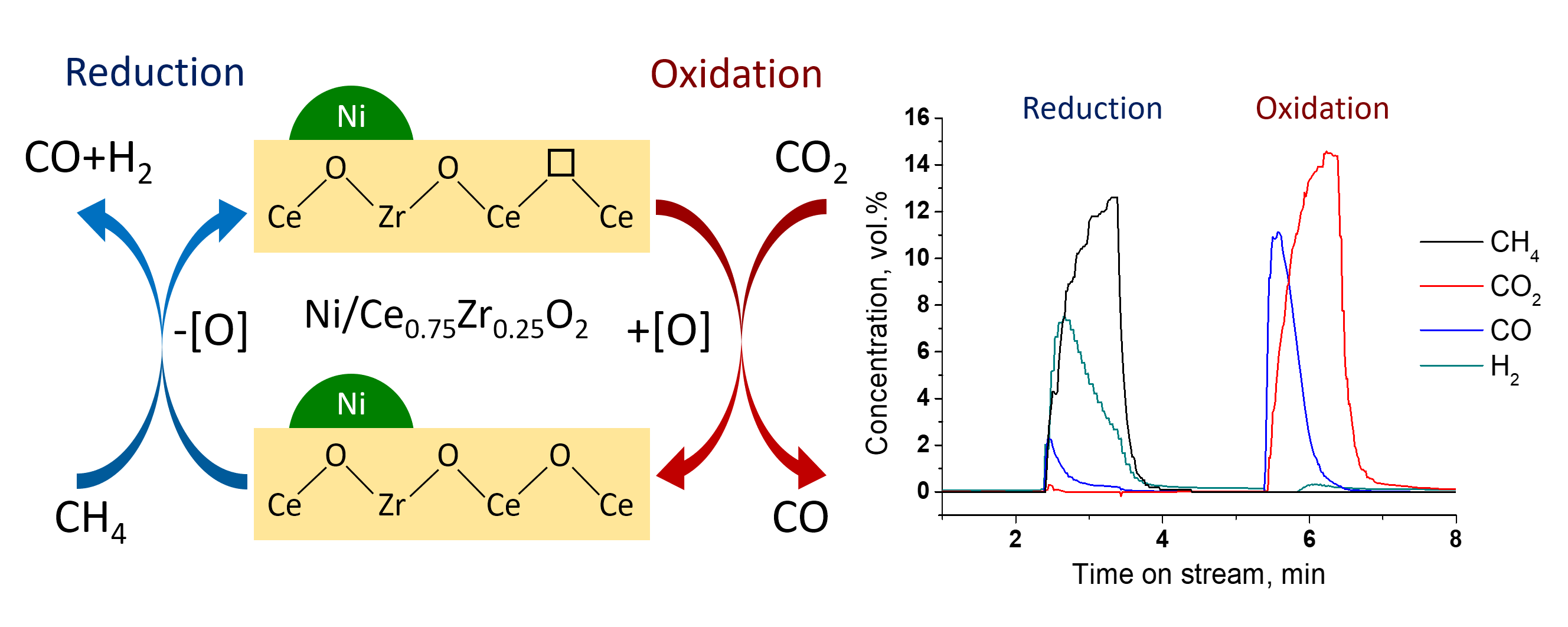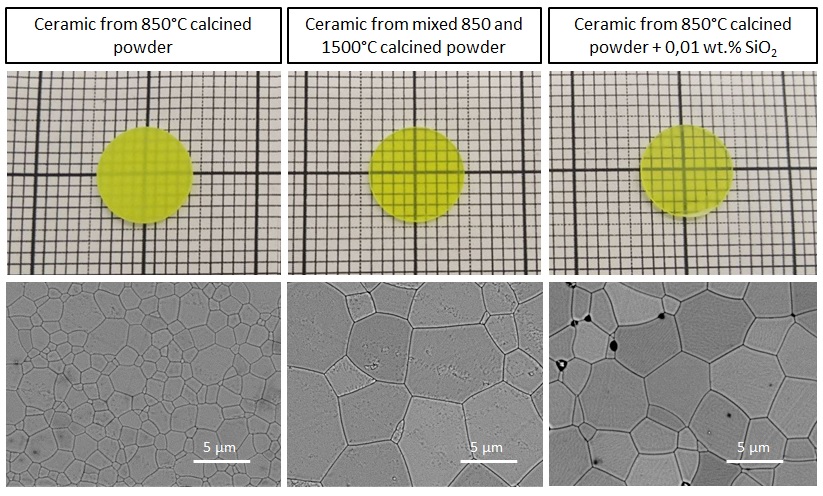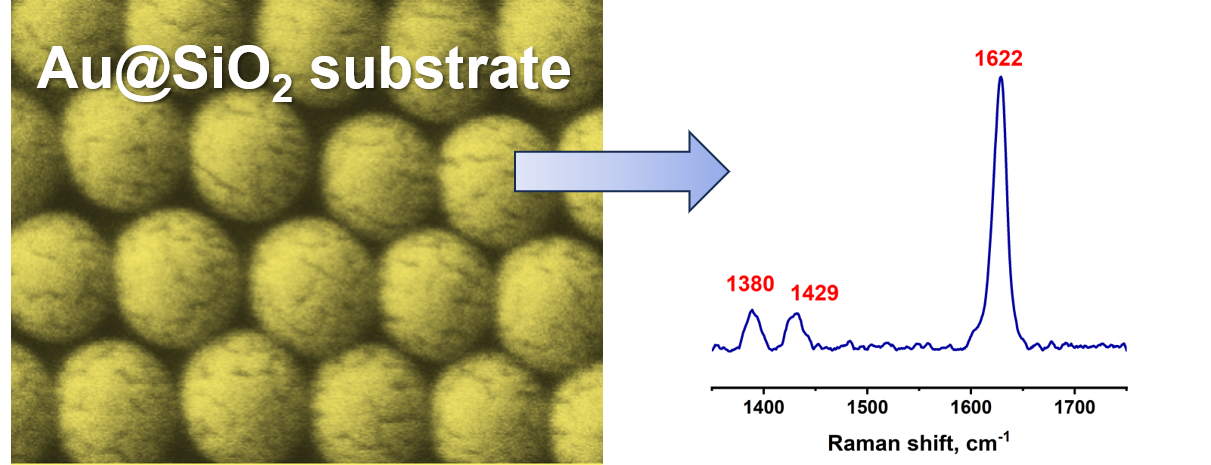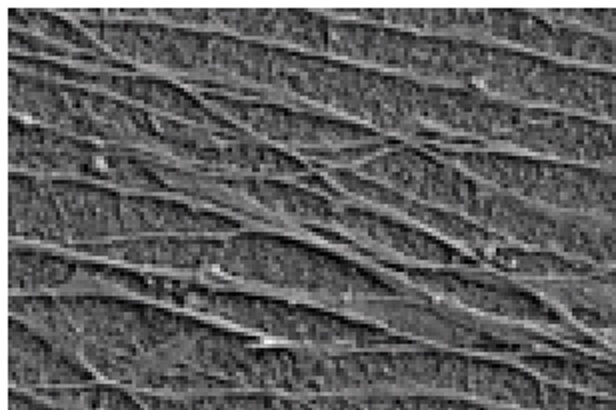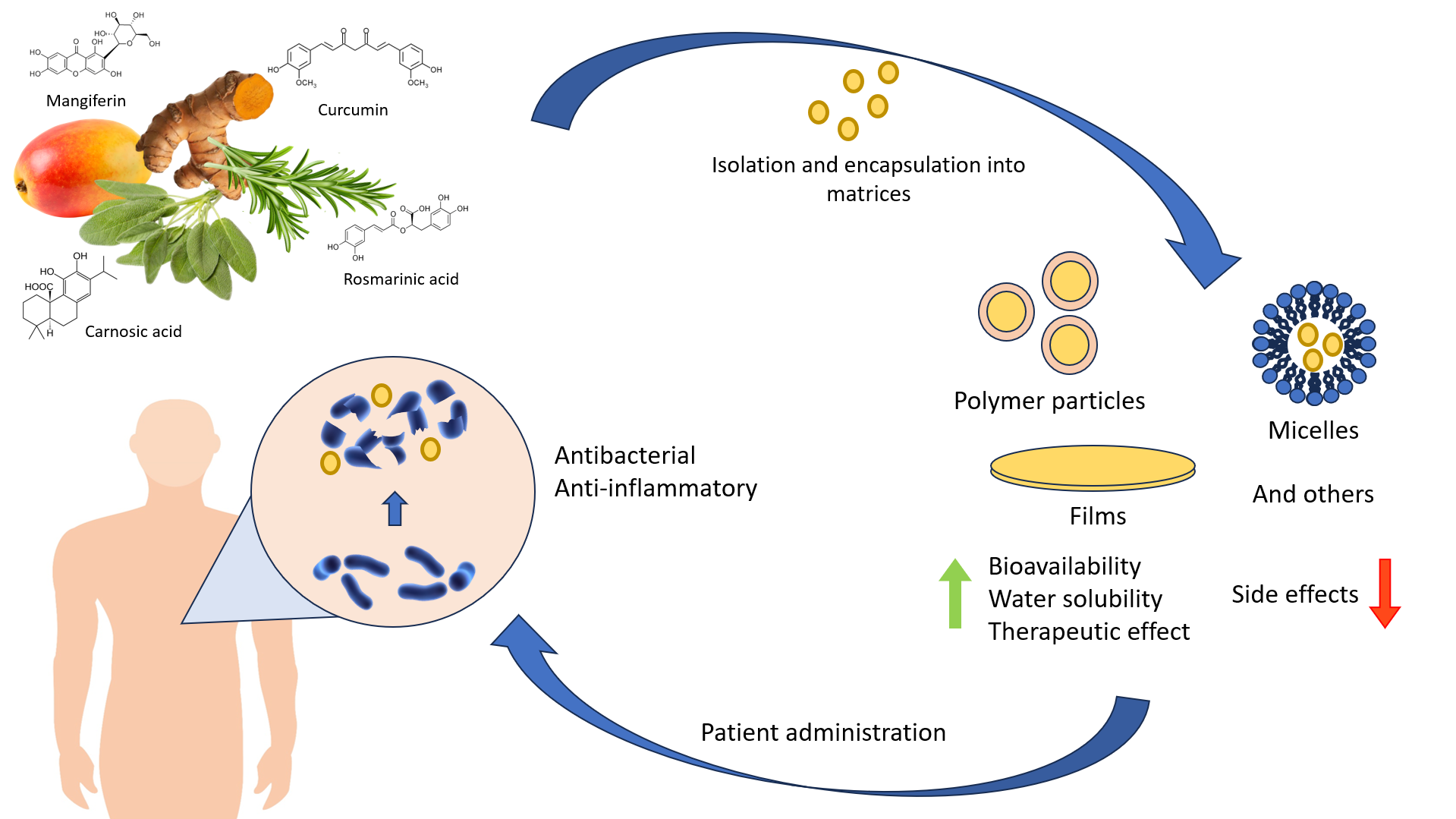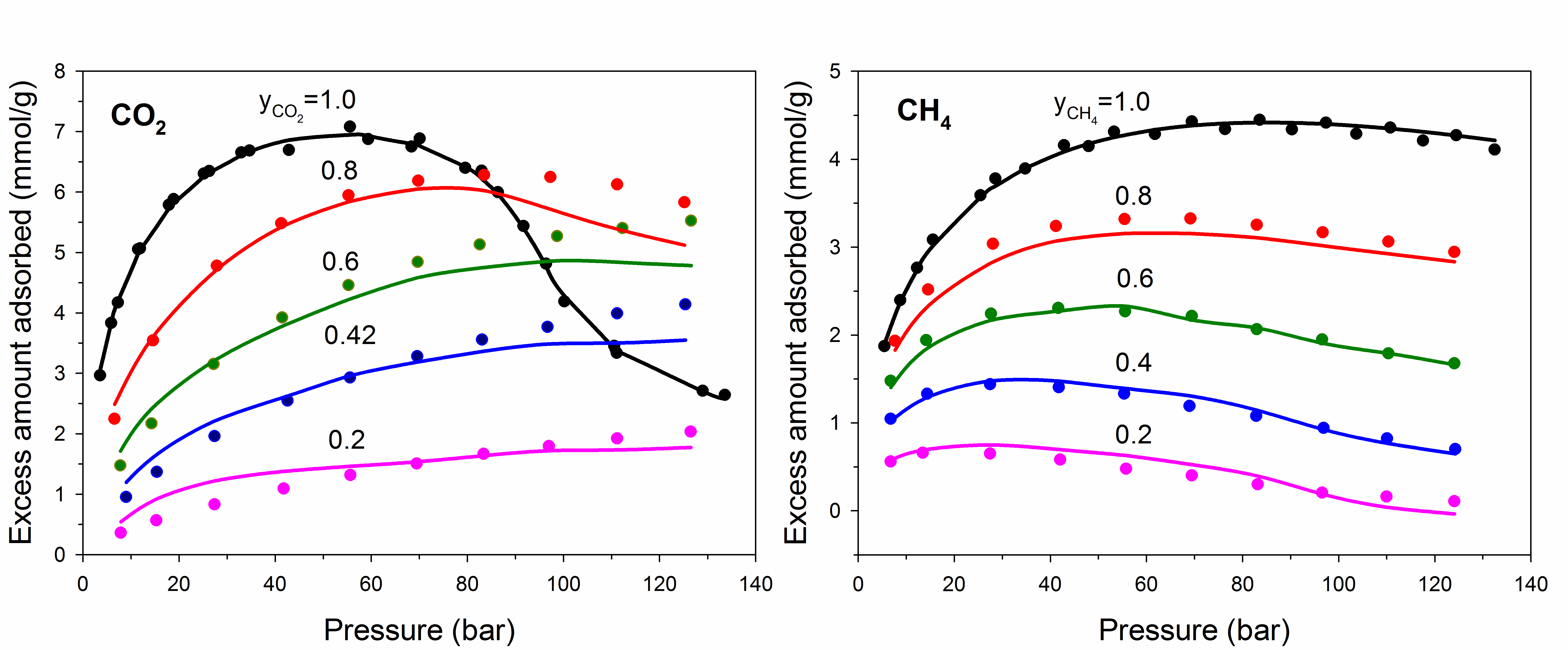MATHEMATICS
We consider the solution of the two-dimensional Neumann problem for the Helmholtz equation in a complex region composed of a square resonator with large number of smaller square resonators connected to it through small apertures along one side. The sizes of the apertures and distances between the neighbour apertures tend to zero. We use the method of matching of asymptotic expansions of solutions. By directing the number of attached small resonators to infinity, we obtain a problem for the Laplacian in the main square with energy-dependent boundary condition.
The work is devoted to developing a self-similar solution for a system of nonlinear differential equations that describe diffusion processes. Various techniques are used to examine the capacity for generating self-similar solutions that can estimate and predict system behavior under diffusion conditions. The focus is on developing and applying numerical algorithms, as well as using theoretical tools such as asymptotic analysis, to obtain more accurate and reliable results. The study’s results can be applied to various scientific and technical fields, such as physics, chemistry, biology, and engineering, where diffusion processes play an essential role. The development of self-similar solutions for systems of nonlinear differential equations related to diffusion opens novel opportunities for modeling and analyzing complex systems and enhancing diffusion processes in various fields.
The manuscript introduces a method to characterize 4-periodic solutions in first-order non-homogeneous differential equations involving piecewise alternately advanced and retarded argument. It systematically delineates the prerequisites for these solutions to exist and furnishes precise methodologies for their determination. Additionally, the paper includes the illustrative example, including scenarios with infinitely many solutions, to demonstrate the effectiveness of the proposed approach.
CHEMISTRY AND MATERIALS SCIENCE
It is shown that the nature of processes in oxide solid-phase systems, primarily in nanosized ones, is determined by the behavior of the substance in a non-autonomous state. The composition of non-autonomous phases, the temperature of transition of non-autonomous phases to a liquid-like state, the equilibrium (locally equilibrium) and metastable thickness of non-autonomous phases, and the viscosity of the liquid-like non-autonomous phase are considered as the main parameters of non-autonomous phases.
The total or partial utilization or recycling of bauxite processing waste (red mud) has the potential to reduce the harmful effect on the environment while simultaneously extracting the most valuable ingredient, scandium which is currently underutilized due to its high cost. The new efficient carbonation technology promises an assured supply of scandium and zirconium at a significantly reduced cost. Here, scandium-zirconium concentrate, extracted by hydrolysis from leachate after carbonate treatment of red mud, was subjected to sintering by ceramic technology at 1100◦C to produce scandia-stabilised zirconia (ScSZ). The XRD patterns demonstrate the successful doping of scandium into the zirconia lattice through the hydrolytic precipitation method. The ratio between the essential components of the functional ceramics Zr and Sc is approximately 4, which correlates with the doping level of ScSZ up to Zr0.8Sc0.2O1.9.
Optimal conditions for the synthesis of single-phase crystalline and nanocrystalline multicomponent oxides based on pyrochlore structure gadolinium titanate have been determined. The parameters of cubic lattices were determined and the morphology of the surface of RE titanates was studied.
Structural transformations of nanocrystals in the LaPO4–GdPO4–(H2O) system under hydrothermal conditions at 230 ◦C were studied depending on the duration of isothermal holding (2 hours, 3 days, and 5 days). It has been shown that a phase with the rhabdophane-like structure, La1−xGdxPO4*nH2O (0.00≤ x ≤1.00), exhibits a weighted average crystallite size of 4–7 nm and crystallizes in the system prior to hydrothermal treatment. As a result of hydrothermal treatment, samples in the LaPO4–GdPO4–(H2O) system are completely transformed into a phase with a monazite structure within five days, with the slowest transfor- mation observed for gadolinium orthophosphate. It was found that nanoparticles with a rhabdophane structure, GdPO4*nH2O, possess a single-crystal structure. The thermal analysis data indicated that the samples obtained via the precipitation method contain an X-ray amorphous phase and impurity compounds. The onset temperature of the structural transformation from rhabdophane to monazite, as well as the number of water molecules in the rhabdophane-like structure, depends on the chemical composition of the compound, particularly with regard to the isomorphic substitution of lanthanum cations with gadolinium cations.
High phase pure (CdO)1-x(Mn3O4)x (x = 0.0/0.25/0.50/0.75/1.0) nanocrystals (including multiphased nanocomposites) were prepared by using a simple microwave-assisted solvothermal method, and characterized structurally, chemically, optically and electrically by carrying out X-ray diffraction, electron microscopic (SEM/TEM), energy dispersive X-ray absorption spectral, optical (UV-Vis) absorption spectral and AC electrical (at various temperatures and frequencies) measurements. Samples prepared exhibit crystalline nature, high chemical purity, nearly uniform spherical morphology, considerable particle sizes (within 47 nm), higher optical band gap energies (4.0 – 5.3 eV) and normal dielectric behavior. Studies were made to understand their capability in photocatalytic degradation (evaluated using Methylene Blue (MB) dye under UV-visible irradiation) and antimicrobial activity against gram positive Bacillus Subtilis (BS), gram negative Escherichia Coli (EC) and fungal Candida Albicans (CA). Results indicate a higher photocatalytic degradation with MB dye for the three multi-phased (CdO)1-x(Mn3O4)x nanocomposites (with x = 0.25/0.50/0/75) prepared (with light of wavelength around 665 nm), and a higher antimicrobial activity with the bacteria (BS and EC) than with the fungus (CA); however, the phase pure Mn3O4 (with x = 1.0) nanocrystal has been found to be more active with all the three microbes considered.
Indium-gallium-zinc oxide InGaZn2O5 was synthesized by nitrate-glycolate gel decomposition method using ethylene glycol as a complexing and chelating agent. In this work, SEM, EDS and UV-visdiffusion spectra of IGZO were obtained. InGaZn2O5 optical band gap was found using Kubelka–Munk transformation. The morphology of the particles was examined: at low sintering temperatures many micro-meter particles are observed, the sample is heterogeneous in crystalline state. At annealing temperatures above 800˚C a single-phase crystalline structure is observed.
Lithium ferrite nanoparticles (Li0.5Fe2.5O4) were synthesized via the solution combustion method with a substantial deficiency of organic fuel (glycine, f = 0.05), followed by heat treatment of X-ray amorphous combustion products at temperatures ranging from 500 to 750◦C. Comprehensive characterization was performed using scanning electron microscopy (SEM), energy-dispersive spectroscopy (EDS), atomic absorption spectrometry (AAS), powder X-ray diffraction (XRD), and vibrating sample magnetometry (VSM). The results indicate significant morphological and structural changes in the nanopowders depending on the heat treat- ment temperature. Average particle sizes ranged from 14.2 to 59.5 nm, while crystallinity varied from 89.4% to 62.8%. Magnetic properties also varied, with coercivity (Hc) between 58.4 and 102.4 Oe, residual magnetization (Mr) from 5.2 to 15.4 emu/g, and saturation magnetization (Ms) from 35.1 to 60.7 emu/g. These findings demonstrate that pure lithium ferrite nanoparticles, free from impurity oxide phases, can be produced through controlled heat treatment of X-ray amorphous combustion products. Furthermore, the magnetic properties of the nanoparticles are highly sensitive to the specific heat treatment temperature, indicating that thermal processing conditions play a crucial role in determining their magnetic behavior.
Typically, intermetallic compounds are prepared by solid-state method at high temperatures. We propose a simple method to obtain intermetallic compounds by reduction in Ar–H2 atmosphere from precursors. In particular, Co2+ and Fe2+ oxidation in hydrothermal conditions grants additional experimental challenge. Here, we report successful Fe phyllogermanate synthesis for the first time. We identify general patterns of formation and determine the effect of hydrothermal treatment on phase composition and morphology for the whole series of phyllogermanates. Formation of phyllogermanates under hydrothermal conditions is studied in the 100 – 200◦C temperature range in three hydrothermal media: H2O, NaOH, Na2SO3. The latter inhibits the oxidation of Co2+ and Fe2+ during the synthesis. An increase in temperature favors to the formation of phase described by three-layers unit cell. Heat treatment in an Ar–H2 atmosphere allows us to obtain intermetallic compounds and MexGey alloys, and to establish the temperature regimes of the reduction processes.
This paper presents a study on the effect of the Ni–Mo–W precursor calcination (300, 450 and 500 ◦C) on properties of granulated bulk Ni–Mo–W catalysts. The Ni–Mo–W precursor and bulk catalysts were studied by XRD, nitrogen adsorption-desorption method, CHNS analysis, thermal analysis, Raman spectroscopy, UV-Vis DR spectroscopy, HRTEM and XPS. It is shown that the increase in calcination temperature of the precursor to 500 ◦C leads to stepwise decomposition of citric acid, transformation of active metals and re-structurization of the samples. Active metals in sulfide catalysts are present in the bulk mixed or individual sulfides and interact with alumina binder to form “NiMoS-like” sulfide phase. Increased crystallinity of the precursor results in the enlargement of bulk nickel particles, capsulation of Mo and W and their rounding by Ni atoms. Catalysts testing in hydrotreatment of SRVGO demonstrates that the best choice of temperature regimes is 300 ◦C for the precursor.
The study and development of yttrium-iron garnets are in demand and promising when creating materials for integrated optics and magnetic microelectronics. The authors synthesized nanosized cerium-substituted yttrium-iron-gallium garnet of the composition Y3−xCexFe5−yGayO12 (where x = 0.4 – 0.5, and y = 2.4 – 2.6), which is characterized by improved magnetic and optical properties. However, the efficiency of applying this material directly depends on the chemical purity of the source materials, as well as the elemental composition of the intermediate and final products. In this regard, the development of multi-element, selective and accurate methods of analysis is an urgent task. As a result of the studies, methods for spectral analysis of cerium-substituted yttrium-iron-gallium garnet were developed. The conditions for determining target analytes (Mg, Al, Si, Ca, Sc, Cr, Mn, Fe, Co, Ni, Cu, Zn, Ga, Se, Y, Cd, Sn, Te, La, Ce, Pr, Nd, Sm, Eu, Gd, Tb, Dy, Ho, Er, Tm, Yb, Lu, Pb) in the materials in question were studied and established using X-ray fluorescence spectrometry (XRF), arc atomic emission spectrometry (AAES) and inductively coupled plasma mass spectrometry (ICP-MS). Approaches to reducing and eliminating the main spectral and non-spectral interferences in the methods studied were proposed. A comprehensive complementary approach to the analytical control of garnets of the Y3−xCexFe5−yGayO12 composition was developed, which ensures high accuracy and relia- bility of the results, and allows one to expand the nomenclature of target analytes and the boundaries of the determined contents.
The structural, conductive and sensor properties of NiO–In2O3 composites synthesized by hydrothermal and impregnation methods are investigated and compared. The mixed oxide considered consists of nanoparticles with electronic (In2O3) and hole (NiO) conduction bands. The lattice parameters of indium oxide decrease with the introduction of NiO into composites synthesized by the hydrothermal method. The addition of 3 % NiO to the hydrothermal composite also increases its specific surface area. The specific surface area and In2O3 lattice parameters in the impregnated samples are essentially independent of the NiO content. The conductivity of impregnated composites is an order of magnitude lower than that of hydrothermal composites. An increase in NiO content leads to a significant enhancement of the sensor response to H2 and CO. In addition, there is a decrease in the optimal operating temperature of hydrothermal and impregnated samples by 60 and 20 ◦C, respectively.
Modified ceria-zirconia oxides were prepared in supercritical fluids in flow-type installation. Ni was added by wetness impregnation. All materials were studied by a complex of physicochemical techniques (XRD, TEM, H2-TPR). Catalysts have been investigated in a modern process – chemical looping methane dry reforming (CLMDR). Conversions of CH4 and CO2, H2/CO ratio, H2 and CO productivities were calculated. The features of CLMDR process were compared with results obtained in MDR steady-state conditions.
Single-phase polycrystalline samples of the (Gd,Y)3Al2Ga3O12:Ce,Tb composition with a garnet structural type were obtained. Using various approaches to the preparation of the initial powders of hydroxycarbonate precursors and compaction methods, the grain size of the ceramics was varied. The scanning electron microscopy method was used to establish the features of the microstructure of the initial powders with different processing temperatures and the microstructure of the resulting ceramics. It is shown that an increase in the grain size of the ceramics and a decrease in the residual porosity gives a noticeable increase in optical transparency in the visible region of the spectrum, in which Ce3+ and Tb3+ ions emit during scintillation. The effect of intergrain boundaries of the ceramics on the diffusion features of nonequilibrium carriers, electrons and holes, as well as excitons formed during the absorption of ionizing radiation on the scintillation yield and energy resolution is considered.
Substrates for Surface-Enhanced Raman Spectroscopy (SERS) were fabricated by gold sputtering onto surface of synthetic opal films and their characteristics were studied at wavelengths λ = 532 and 785 nm. Synthetic opal films were fabricated by self-assembly of spherical SiO2 particles on vertical substrates. It was found that at the concentration of the analyte methylene blue equal to 10−5 M the intensity of SERS at the wavelength of 785 nm increased with increasing amount of sputtered gold up to a certain optimal thickness exceeding 35 nm, while at the concentration of 10−6 M this dependence was not observed. It is assumed that this is due to the complex amount-dependent morphology of the sputtered gold coating and the presence of “hot spots” of different strengths. For the best samples at a wavelength of λ = 785 nm, the SERS enhancement factor was of 7·104 and a detection limit for methylene blue reached 3·10−7 M that exceeds the results published for similar substrates previously. The SERS parameters obtained for λ = 532 nm were less attractive, despite the additional enhancement due to this wavelength was at the edge of the photonic stop-band.
The paper reports the results of a large-scale testing of antibacterial textiles with extremely stable and long-lasting copper oxide coating. Using disk diffusion method, ICP-OES and specific lux biosensors it was shown that the coating does not leach copper ions into the environment. Laboratory experiments performed according to the ISO 20743 protocol showed high antibacterial activity of the produced coating, up to complete growth suppression for some strains. The long-term field tests were carried out in a tropical climate, at the Climate test station “Hoa Lac” (Hanoi city, Vietnam). The number of microorganisms on the textile materials remained within the range of 1–3% in comparison with the control sample for the entire duration of the field exposure (12 months).
Graphene and graphene oxide have emerged as promising materials in various biomedical applications due to their unique physicochemical properties. This review provides a comprehensive overview of their utilization in gene delivery, tissue engineering, biosensors and antibacterial and antimicrobial agents. In gene delivery, graphene-based materials offer efficient delivery platforms with enhanced cellular uptake and minimal cytotoxicity, promising advancements in gene therapy. Additionally, in tissue engineering, graphene and graphene oxide scaffolds exhibit excellent biocompatibility, electrical conductivity, and mechanical properties, facilitating cell adhesion, proliferation, and differentiation for tissue regeneration. Moreover, graphene-based biosensors demonstrate high sensitivity, selectivity, and stability, enabling rapid and accurate detection of biomolecules for diagnostic and therapeutic purposes. This review highlights the recent advancements, challenges, and future prospects of graphene and graphene oxide in revolutionizing biomedical technologies, paving the way for innovative solutions in healthcare.
Bacterial infections associated with multidrug-resistant pathogens are a serious danger to both humans and farm animals. For this reason, natural biologically active agents (BAA), in particular, polyphenols, with a wide range of biological activity could become promising molecules for effective antibacterial therapy. Despite the potentially high antibacterial activity and other beneficial biological effects, the use of such BAA is hindered due to their low water solubility. To overcome this problem, various approaches are used, for example, loading BAA into nanosized delivery systems (nanoparticles, nanocapsules, micelles, etc.). Such approaches allow not only to increase the effectiveness of natural BAA, but also to ensure their targeted (local) effect, which is important in the treatment of bacterial diseases, and in some cases result in synergic action. This review describes the antibacterial properties of the most promising polyphenols and key approaches for their delivery at the nanoscale level, as well as the methods for their development.
In this work, we developed a phenomenological approach to describe the equilibrium adsorption of nonideal gas mixtures in nanoporous adsorbents over a wide pressure range. The key point of the developed approach is an observation that the Gibbs free energy of a gas mixture is close to its ideal term. This feature, being more general than the empirical Raoult’s law in the ideal adsorbed solution theory (IAST), was combined with the distribution of elements of the adsorption volume (EAV) of the porous material over potentials in the spirit of Polanyi’s theory. We applied this approach to the adsorption of individual and binary gas mixtures of CO2, CH4, and N2 on an activated carbon in a wide pressure range up to 13 MPa. The approach provides high accuracy in predicting the adsorption of gas mixtures based on individual adsorption isotherms and obeys the Gibbs-Duhem equation, which confirms its thermodynamic consistency
ISSN 2305-7971 (Online)



